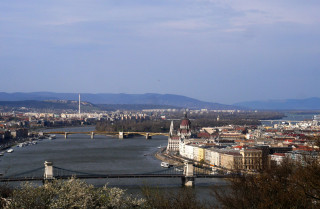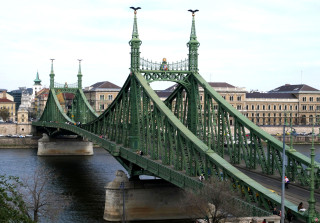
The Danube defines not only Hungary but the entire Central and Eastern European region: it is a fundamental part of Hungary’s hydrography. Ever since the dawn of time, the river has accompanied Hungary’s long, eventful history. The river has seen Roman traders, Hungarians fighting Ottoman invaders, the founding of our capital city, and the horrible dictatorships of the 20th century, and all throughout it has flown uninterrupted to the Black Sea. The vistas of many a Hungarian city, including Esztergom, Visegrád, and Budapest, would be unimaginable without this great river.
However, Hungary’s capital is not only famous for being dissected by one of Europe’s longest rivers but also because of its bridges, which are on par with the most famous bridges of the world’s metropolises. The first permanent bridge across the Danube was the Széchenyi Chain Bridge (originally called simply the Chain Bridge), which was built by the “greatest of all Hungarians”, Count István Széchenyi in the mid-19th century. The bridge is one of the country’s most famous landmarks and is included in the sight-seeing itineraries of practically every Hungarian and foreign tourist. Not only is the Széchenyi Chain Bridge a symbol of Hungary, it is also representative of the period (mid-19th century) when the nation experienced a great deal of infrastructural and cultural development.
Another famous bridge in the capital city is Margaret Bridge, which was also opened in the 19th century. The appearance of the bridge underwent significant changes over the many decades that have since passed: it was blown up during World War II, rebuilt in 1948, and renovated between 2009 and 2011. It is a favorite of both pedestrians and cyclists as a way to access one of the city’s most popular parks, Margaret Island. The city’s shortest bridge over the Danube, called Liberty Bridge (originally Franz Joseph Bridge) was also built in the 19th century. Its uniquely green span is especially popular among younger people: not only does it connect universities on the two banks of the Danube (Budapest Corvinus University and the Budapest University of Technology and Economics) but it is also closed for the weekends on the summer to be used as a venue for picnicking and other activities. The 13 road and 2 railway bridges that connect Budapest’s various districts not only play an important role in infrastructure but also form bridges between people and ages, forming a strong link between the past and the present.
